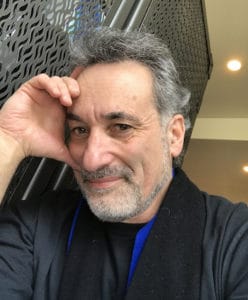Adverse reactions could be due to a botched treatment, we were thinking one thing, but did another. Or our diagnosis was off. Or maybe it was on, spot on but the patient’s processing of the treatment gives rise to a frightening amount of discomfort and sends them scurrying for a quick pharmaceutical fix to calm their fear and anxiety.
It requires a certain amount of maturity the part of the practitioner to hold steady in a moment of deep uncertainty. And degree of personal development on the part of both patient and practitioner to not let unforeseen reactions stop what might be an important turn in a patients healing process.
In today’s conversation we consider adverse reactions to acupuncture, how to tell the difference between an uncomfortable healing process and an unskilled treatment, and how uncertainty is part of the game when practicing medicine.
- Paying attention to what shows up at the periphery
- Recognizing the differences between a healing crisis and a poor treatment
- What can happen when latent pathogens are mobilized
- A surprising case of neck pain
- A little better means mostly not better
- Sometimes our treatments provoke something in the patient’s body and the expression of that lingering pathogen can look like a problem as it works its way out of the body
- In working with lingering pathogens, there has to be a degree of readiness of both the practitioner and the patient
- Skillful use of language around organ function
- Attending to the six confirmations more than attending to individual organs
- Having the “Etch-A-Sketch” moment of this is all wrong
- The problems generated by certain amount of clinical success
- The symptom location and actual problem location might be very different
- Michael’s experience with learning something about the six confirmations the hard way
- The tension between spontaneity and rote knowledge
- The big unknown of how acupuncture might change the efficacy of pharmaceutical medication
 Daniel Schulman
Daniel Schulman
I graduated from acupuncture school in 1999. My first week in practice I realized three terrifying things;
- Anything can be anything (in other words, dysfunction in just about any channel or channel combination could be underlying just about any symptom)
- Most of my patients exhibited no less than 12 ‘patterns’ and often more
- At any moment in the clinical encounter, there were 10,000 things happening and at my utmost level of awareness and presence, I could become aware of at most 30-40 of them
Noise and ignorance! Immediate existential despair in the clinic! What do I hang my hat on? I could just needle Liver 3, Large Intestine 4, Spleen 6 on everyone. Surely there is more to this than that. I had just completed a full year of study and apprenticeship in the Kiiko Matsumoto/Nagano system. I am forever grateful for this gift. Thank you Kiiko! That gave me a solid palpatory basis on which to depend. And so I did. In the ensuing 20 years, I have reinforced that palpation-focused system with Nei Jing studies, the works of Wang Ju Yi and many other influences.
I now practice what I would call a ‘shoot first, ask questions later’ style of acupuncture. When a new patient arrives in my clinic, after no more than 5 minutes talking, I have them on the table, palpating them from their toes to their nose. Only after palpating and sometimes only after observing their initial treatment response, do I begin to ask questions more deeply and assemble ideas around what system dysfunctions are likely to be in play.
I have found this to be a tremendously rewarding approach that continues to grow, deepen and evolve in my clinical practice. Most recently in my clinic, a clear resonance between the six conformations and palpation findings has emerged – and I find it places me reliably and effectively well below the level of the ten thousand things, the symptoms, the veneer of things – at a level of complexity integration where I am finding Acupuncture seems to really shine. In this ‘reverse-engineered’ palpate-first-ask-questions-later process, most patients who come to my clinic appreciate almost instantly that I am paying attention to them in a very different way; that we are partnered in a very dynamic mutually engaging process. I almost never have a boring day in clinic – even after 20 years.
Links and Resources
Visit Daniel's website, he's got some evocative writing worth sitting down with over a cup of tea.
Daniel's favorite YouTube talk.
Join the discussion!
Leave a comment on Qiological's Facebook page.
